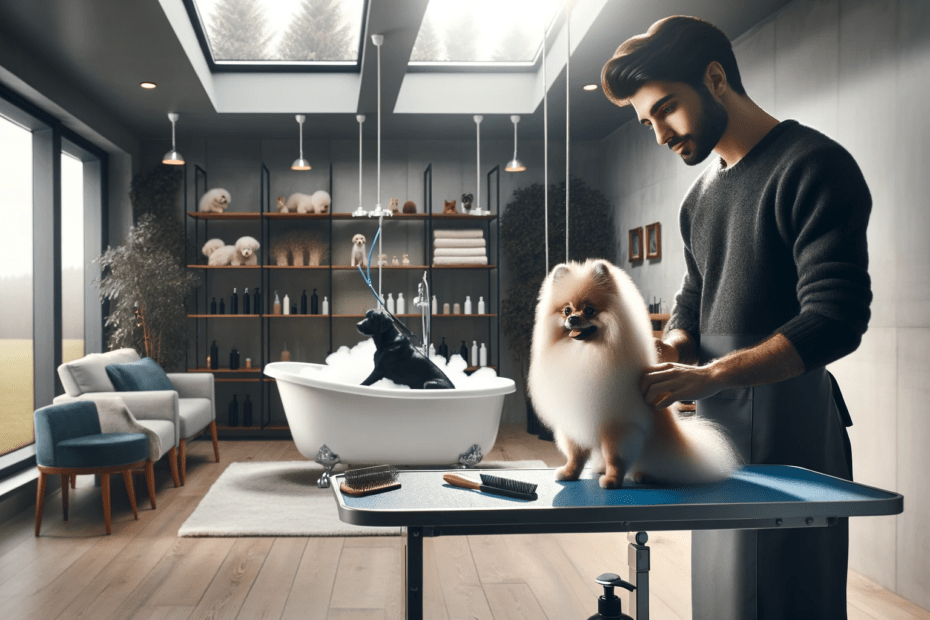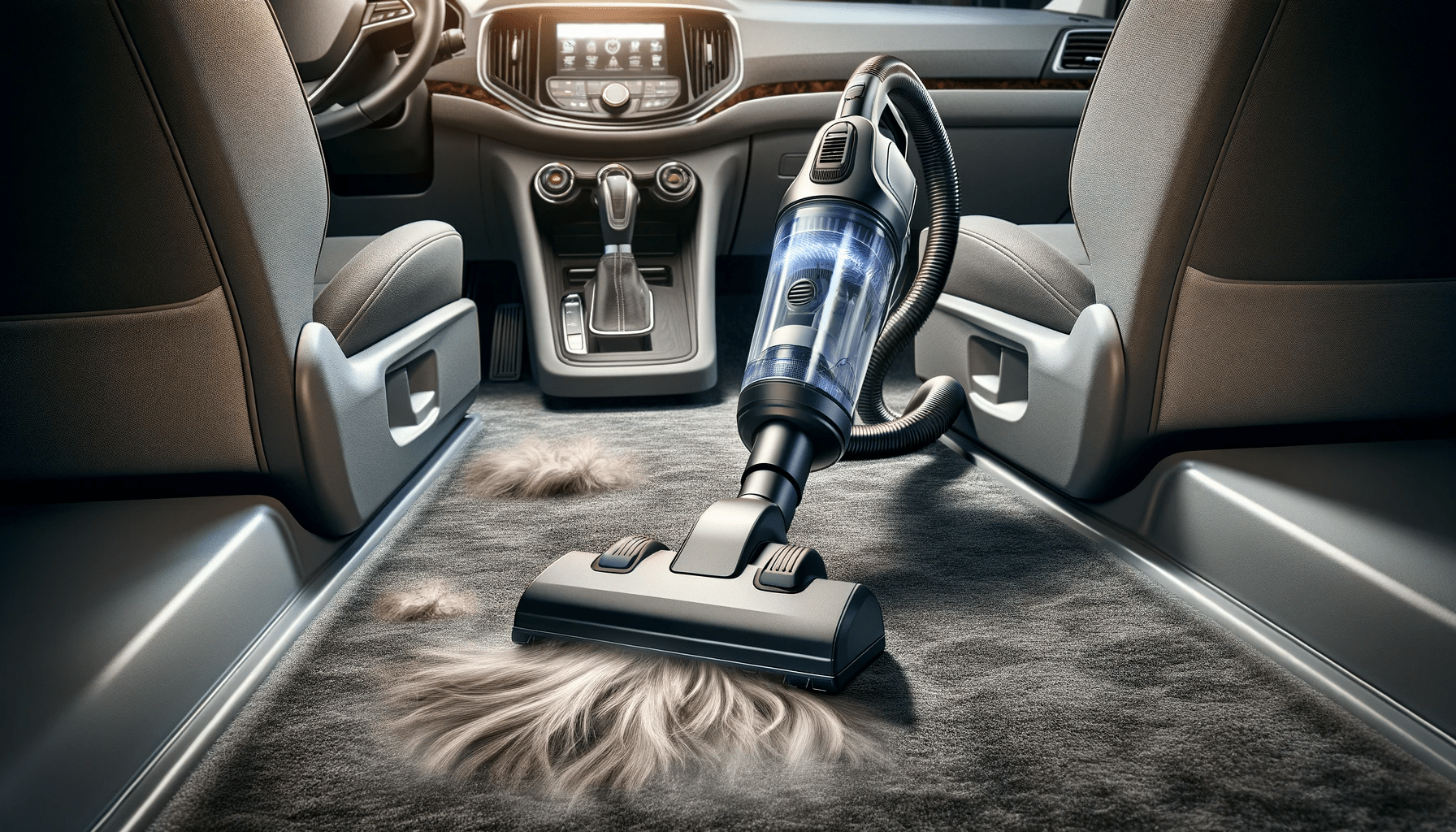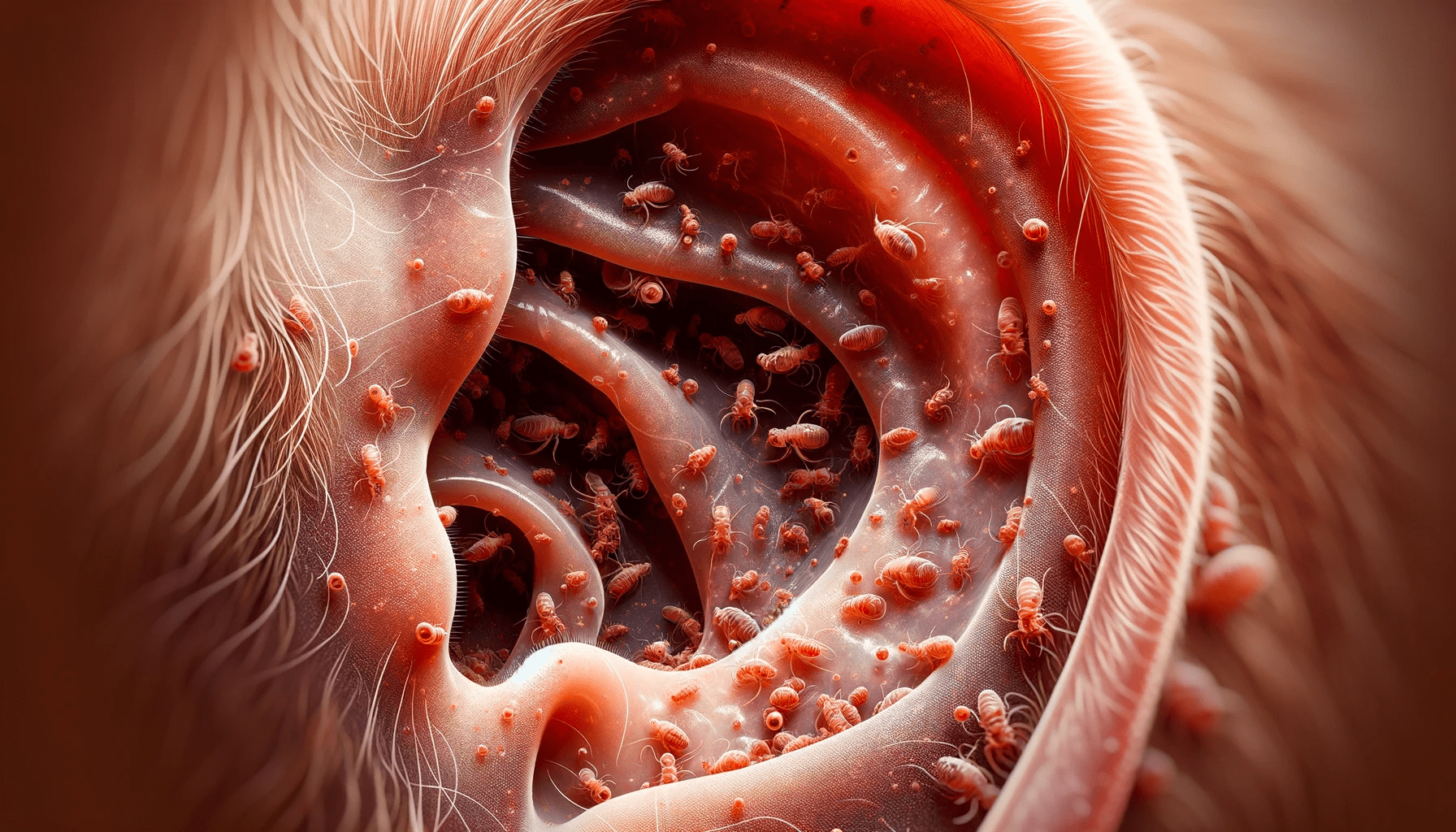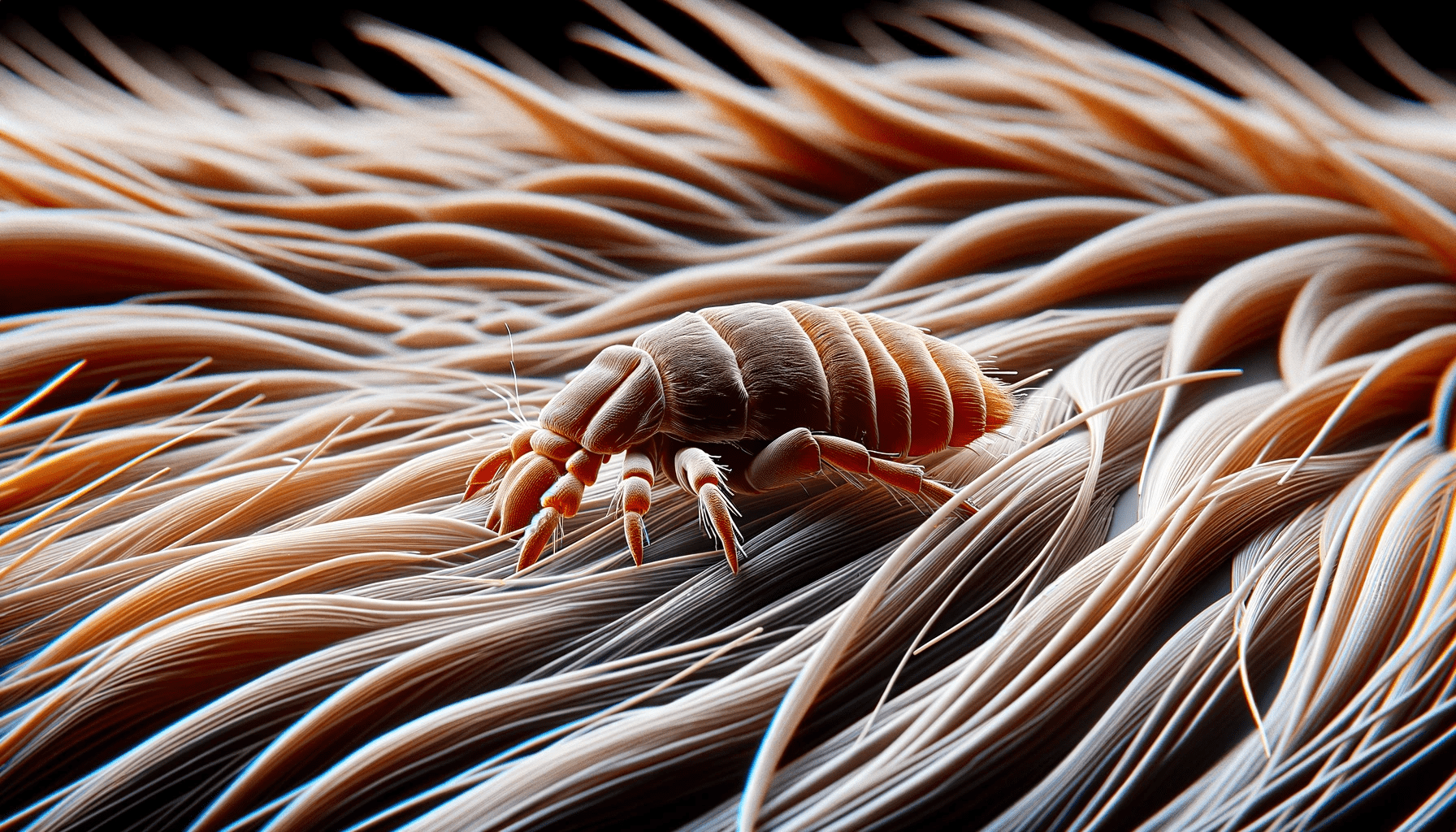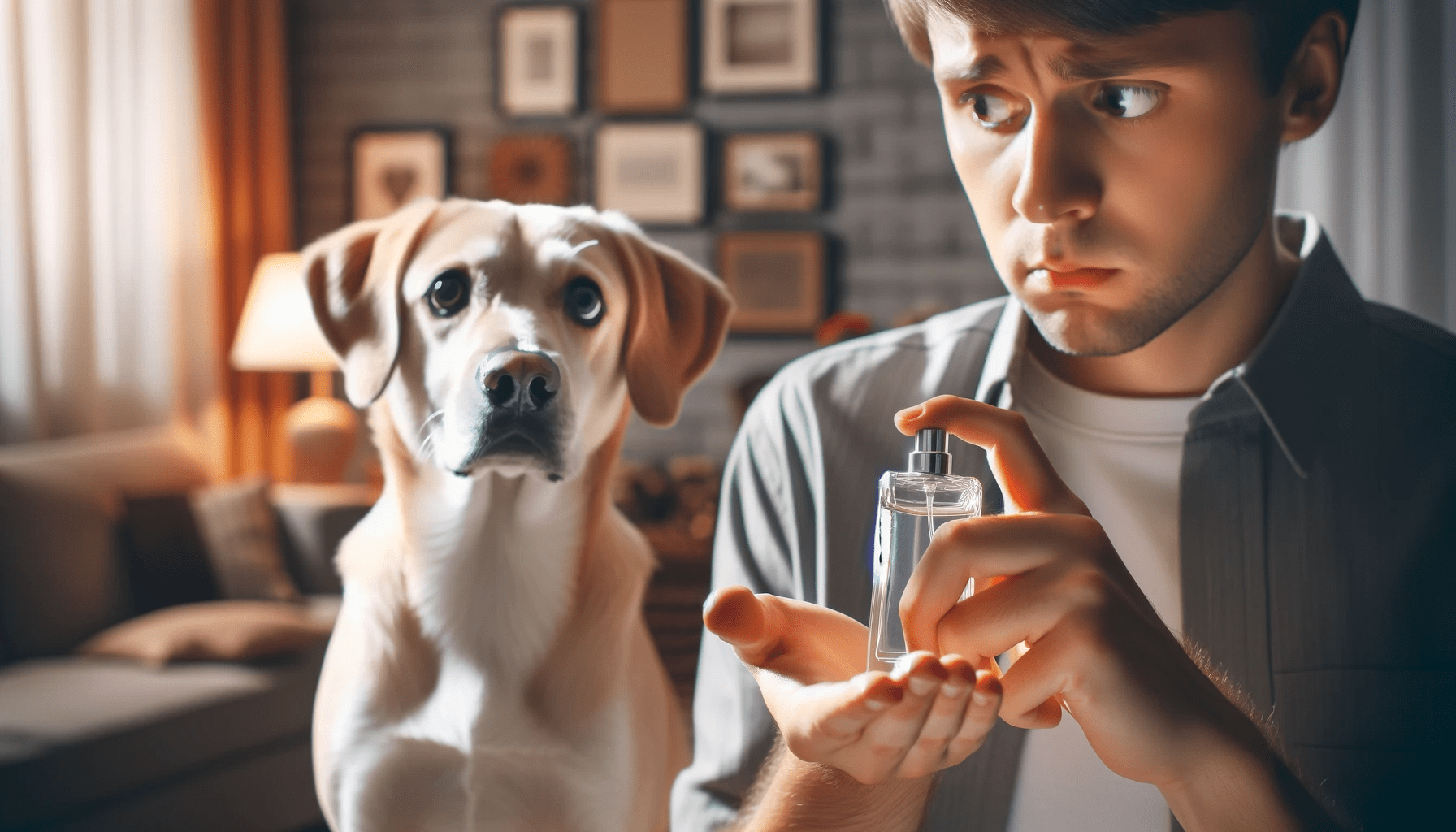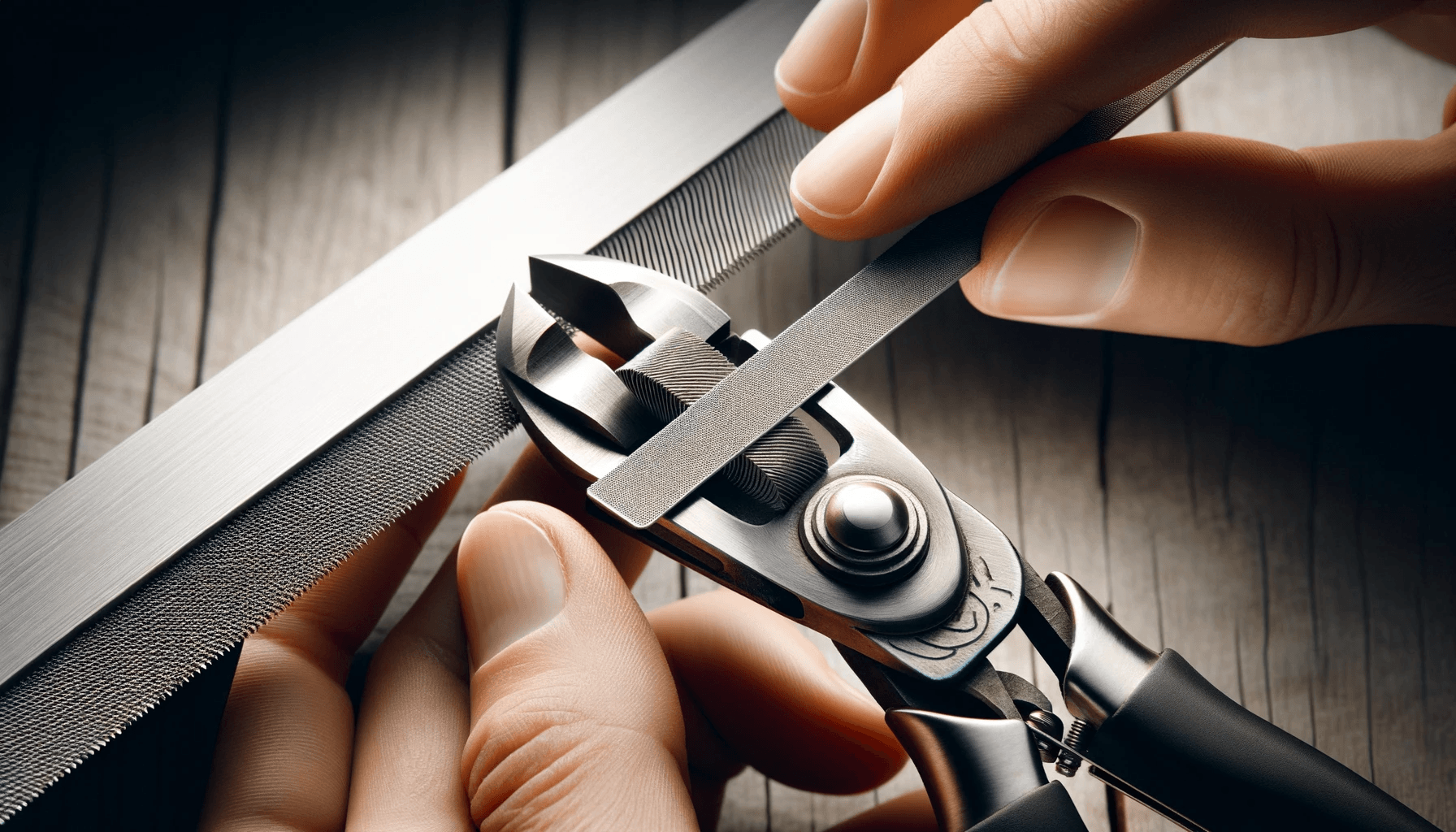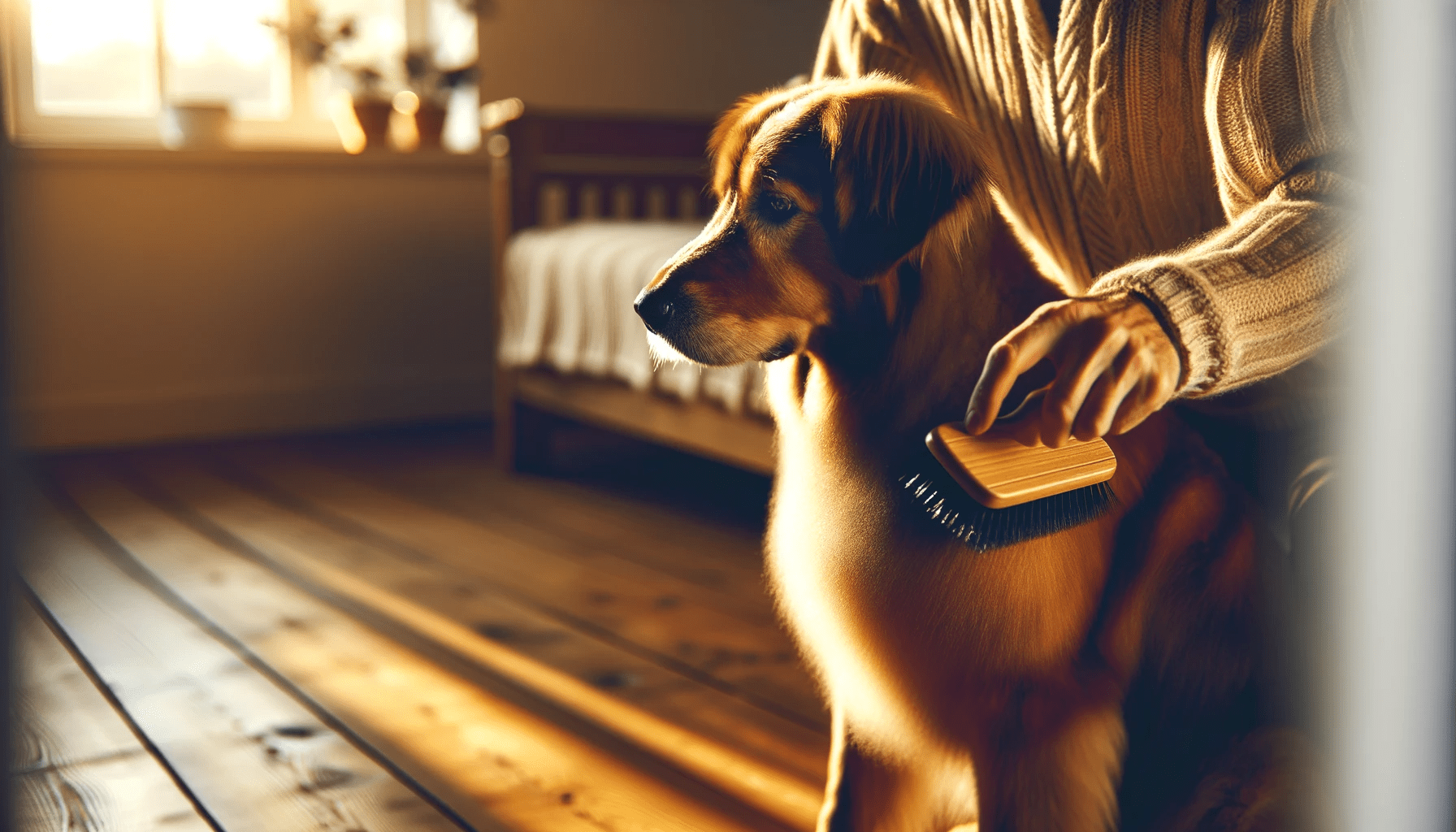Looking for expert tips to keep your furry friend looking their best? Look no further!
In this article, we've gathered the top 15 pro dog grooming tips nearby, just for you. From finding the best grooming salon to understanding your dog's specific needs, we've got you covered.
Learn the techniques for a shiny coat, nail trimming made easy, and safely cleaning your dog's ears. Plus, we'll share tips for managing anxiety and stress during grooming, preventing fleas and ticks, and grooming tips for specific breeds.
Your pup will thank you!
Key Takeaways
- Ask for recommendations from friends, family, and neighbors
- Check online review platforms for feedback from other pet owners
- Consider DIY grooming techniques with the right tools and knowledge
- Pay attention to cleanliness, friendliness of staff, and overall atmosphere
Finding the Best Dog Grooming Salon
To find the best dog grooming salon nearby, start by asking your friends, family, and neighbors for recommendations. They may have firsthand experience with local grooming salons and can provide valuable insights.
Additionally, consider checking online review platforms for feedback from other pet owners. Look for salons that offer affordable grooming options without compromising on quality. Some salons may have package deals or discounts for regular customers, which can help save money in the long run.
Another option is to explore DIY grooming techniques. With the right tools and knowledge, you can groom your dog at home and save on grooming expenses. However, it's important to note that DIY grooming may not be suitable for all dogs, especially those with specific grooming needs or behavioral issues. In such cases, it's best to seek professional help.
When visiting potential grooming salons, pay attention to the cleanliness of the facilities, the friendliness of the staff, and the overall atmosphere. A well-maintained and welcoming environment is a good indication of the salon's commitment to providing quality grooming services.
Understanding Your Dog's Grooming Needs
Understand your dog's grooming needs by observing their coat type, behavior, and any specific grooming requirements they may have. By understanding these factors, you can ensure that you're providing the right care for your furry friend.
First, consider your dog's coat type. Different coat types require different grooming techniques. For example, long-haired dogs may need more frequent brushing to prevent matting, while short-haired dogs may benefit from regular shedding tools to reduce shedding. Additionally, some dogs may have specific grooming requirements based on their breed or individual needs. For instance, certain breeds may require regular trimming or hand-stripping to maintain their coat's texture and appearance.
Next, observe your dog's behavior during grooming sessions. Some dogs may be more sensitive or anxious during grooming, while others may enjoy the process. Understanding your dog's behavior will help you choose the right approach and grooming tools to ensure a positive experience.
Lastly, make sure you have the appropriate grooming equipment for your dog's needs. This may include brushes, combs, clippers, and grooming shears. Investing in high-quality tools won't only make the grooming process easier but also ensure the safety and comfort of your dog.
Brushing Techniques for a Shiny Coat
To achieve a shiny coat for your dog, it's important to use proper brushing techniques that cater to their specific grooming needs and coat type. Here are some tips to help you maintain a healthy and lustrous coat for your furry friend:
- Choose the right brushing tools: Invest in a high-quality brush or comb that's suitable for your dog's coat. Different coat types require different tools, so do some research to find the best option for your pet.
- Brush regularly: Make brushing a part of your dog's routine. Regular brushing helps to remove loose hair, prevent matting, and distribute natural oils for a shiny coat. Aim for at least once a week, but some breeds may require daily brushing.
- Use gentle strokes: Be gentle and avoid pulling or tugging on your dog's fur. Start from the top and work your way down, using smooth and even strokes to avoid causing any discomfort or pain.
- Pay attention to problem areas: Some dogs have areas that are prone to matting or tangling, such as behind the ears or under the armpits. Give these areas extra attention and use a detangling spray or conditioner if needed.
- Seek professional help when necessary: If you're unsure about how to properly groom your dog's coat or if your dog has a particularly challenging coat type, consult a professional groomer for guidance and assistance.
Nail Trimming Made Easy
Maintaining a shiny coat for your dog is just one aspect of proper grooming; another important area to focus on is nail trimming. Long nails can cause discomfort and pain for your furry friend, so regular nail trims are essential. When it comes to nail trimming, it's important to use the right tools and techniques to ensure your dog's safety.
One effective technique for trimming your dog's nails is to use a nail file. This can be less intimidating for dogs who are afraid of clippers. Start by introducing the file to your dog, allowing them to sniff and become familiar with it. Then, gently file the tip of each nail in a downward motion, being careful not to file too far and hit the quick, which can cause bleeding and pain. Take breaks if your dog becomes anxious or stressed, and reward them with treats and praise for their cooperation.
In addition to nail filing techniques, it's crucial to take steps to prevent nail injuries. Keep your dog's nails at an appropriate length to avoid painful splits or breaks. Regular exercise on different surfaces can help naturally wear down the nails and reduce the need for frequent trims. Lastly, provide your dog with a comfortable and secure place to walk and play to minimize the risk of accidents or trauma to their nails.
Safely Cleaning Your Dog's Ears
To keep your dog's ears clean and healthy, it's important to regularly and gently clean them. A buildup of dirt, wax, or moisture can lead to unpleasant odors, discomfort, and even ear infections. Follow these cleaning techniques to ensure your furry friend's ears stay in tip-top shape:
- Gather the necessary supplies: You'll need a gentle ear cleaning solution specifically made for dogs, cotton balls or pads, and a towel.
- Choose the right time: Find a quiet and calm environment where your dog feels relaxed and comfortable.
- Start by examining the ears: Look for any signs of redness, swelling, discharge, or foul odor. If you notice any of these symptoms, consult your veterinarian before attempting to clean the ears.
- Gently clean the outer ear: Moisten a cotton ball or pad with the ear cleaning solution and wipe the visible parts of the ear, being careful not to go too deep into the ear canal.
- Dry the ears thoroughly: Use a clean towel to remove any excess moisture from the ears.
Regularly cleaning your dog's ears can help prevent ear infections and maintain their overall health and well-being. If you have any concerns or are unsure about the process, consult your veterinarian for guidance.
Properly Bathing Your Dog at Home
When bathing your dog at home, it's important to consider the water temperature and safety. Make sure the water is warm, but not too hot, to avoid scalding your dog's skin.
Additionally, choose the right products that are specifically made for dogs to ensure their safety and well-being.
Water Temperature and Safety
For a safe and comfortable bathing experience, start by ensuring that the water temperature is just right. Here are some tips to help you maintain water temperature safety and master bathing techniques for your dog at home:
- Check the temperature: Use a thermometer to ensure the water is lukewarm, around 100°F (38°C), as extreme temperatures can be uncomfortable for your dog.
- Avoid hot water: Be cautious not to use hot water as it can scald your dog's sensitive skin.
- Test the water: Before fully immersing your dog, run a small stream of water on their paw to make sure it's not too hot or too cold.
- Maintain a consistent temperature: Keep the water temperature consistent throughout the bath to provide a more soothing experience for your dog.
- Consider your dog's preferences: Some dogs may prefer warmer or cooler water, so pay attention to their reactions and adjust accordingly.
Choosing the Right Products
What products do you need to properly bathe your dog at home?
When it comes to grooming your furry friend, having the right dog grooming products and grooming supplies is essential.
First and foremost, you'll need a gentle dog shampoo specifically formulated for dogs, as human shampoos can be too harsh for their sensitive skin.
Additionally, a good quality conditioner can help keep their coat soft and shiny.
It's also important to have a brush or comb suitable for your dog's fur type, as well as nail clippers or a grinder for regular nail maintenance.
Don't forget about ear cleaning solution and dental products like toothpaste and a toothbrush designed for dogs.
With these essential grooming supplies, you'll be well-equipped to keep your dog looking and feeling their best at home.
Drying Techniques and Tools
To properly dry your dog after bathing them at home, it's important to use the right drying techniques and tools. Here are some tips to help you achieve a thorough and efficient drying process:
- Use a high-quality pet dryer: Invest in a pet dryer specifically designed for dogs, as it will provide the right amount of airflow without causing discomfort.
- Start with a towel: After bathing your dog, gently towel dry their fur to remove excess moisture.
- Use a slicker brush: While drying, use a slicker brush to help remove any tangles or knots in your dog's coat.
- Use a force dryer: For dogs with thick or long hair, a force dryer can help speed up the drying process by blowing warm air directly onto their coat.
- Be patient and thorough: Take your time to ensure that your dog is completely dry, paying special attention to hard-to-reach areas like their underbelly and paws.
Handling Shedding and Dealing With Mats
Regular maintenance is key to effectively managing shedding and preventing mats in your dog's coat. Dealing with shedding can be a challenge, but there are prevention methods you can employ to keep your dog's coat healthy and minimize shedding.
First, make sure to brush your dog regularly. This helps to remove loose hair and prevent it from accumulating in the coat, which can lead to mats and tangles. Use a brush that's suitable for your dog's coat type, such as a slicker brush for long-haired breeds or a bristle brush for short-haired breeds.
Additionally, consider using a de-shedding tool or a grooming glove to help remove excess hair. When brushing, be gentle and start from the top down, working your way through the coat, paying special attention to areas prone to matting, such as behind the ears and under the legs.
If you notice any mats or tangles, use a detangling spray or conditioner and carefully work through them with a comb or your fingers. Regular grooming sessions can help keep your dog's coat in top condition and minimize shedding and matting.
Maintaining Dental Health for Your Dog
To maintain your dog's dental health, it's important to follow a few key steps:
- Brush their teeth regularly using a dog-friendly toothbrush and toothpaste.
- Use dental chews and toys to help remove plaque and tartar buildup.
- Schedule regular check-ups with your vet to ensure any dental issues are caught early and treated appropriately.
Brushing Dog's Teeth
Maintain your dog's dental health by regularly brushing their teeth. Here are some tips to help you keep your dog's teeth clean and their dental hygiene in check:
- Use a dog toothbrush and toothpaste specifically formulated for dogs. Avoid using human toothpaste, as it can be harmful to dogs.
- Start by introducing your dog to the toothbrush and toothpaste gradually. Allow them to sniff and lick the toothpaste to get used to the taste and texture.
- Gently lift your dog's lips and brush their teeth in a circular motion, focusing on the gum line. Be sure to reach the back teeth as well.
- Aim to brush your dog's teeth at least 2-3 times a week. Consistency is key to maintaining good dental health.
- Consider providing dental chews or toys that can help reduce plaque and tartar buildup between brushings.
Dental Chews and Toys
To continue ensuring your dog's dental health, incorporate dental chews and toys into their routine.
Dental hygiene is just as important for dogs as it is for humans. Dental chews and toys provide a great way to maintain your dog's oral health.
These chew toys are specifically designed to help remove plaque and tartar buildup, keeping your dog's teeth clean and healthy. The act of chewing also helps to stimulate saliva production, which can naturally clean the teeth and gums.
When selecting dental chews and toys for your dog, choose ones that are made of durable materials and are the appropriate size for your dog's breed and size.
Regularly incorporating dental chews and toys into your dog's routine can greatly contribute to their overall dental health.
Regular Vet Check-Ups
Scheduling regular vet check-ups is crucial for maintaining your dog's dental health. Here are some reasons why vet check-ups are essential for your dog's oral hygiene:
- Early Detection: Regular vet check-ups allow for early detection of dental issues such as gum disease, tooth decay, and oral infections.
- Professional Cleaning: Veterinarians have the expertise and tools to perform thorough dental cleanings, removing tartar buildup and preventing dental problems.
- Dental Examinations: During check-ups, vets can examine your dog's teeth, gums, and mouth for any signs of oral diseases or abnormalities.
- Treatment and Prevention: Vets can provide proper treatment and preventive measures to ensure your dog's dental health remains in optimal condition.
- Expert Advice: Vets can offer advice on dental care routines, including brushing techniques and appropriate dental products for your dog's grooming needs.
Choosing the Right Shampoo and Conditioner
Make sure to pick out the right shampoo and conditioner for your pup's grooming needs. When it comes to dog grooming supplies, choosing the right shampoo and conditioner is essential to keep your furry friend's coat healthy and shiny.
Natural grooming products are a great choice as they're gentle on your dog's skin and free from harsh chemicals that can cause irritation. Look for shampoos and conditioners that are specifically formulated for your dog's coat type, whether it's short, long, curly, or double-coated.
If your dog has sensitive skin or allergies, opt for hypoallergenic products that are fragrance-free and made with soothing ingredients like oatmeal or aloe vera. It's also important to consider any specific issues your dog may have, such as dry skin or excessive shedding, and choose products that address these concerns.
Remember to follow the instructions on the bottle and thoroughly rinse out all the shampoo and conditioner to prevent any residue from irritating your pup's skin. By selecting the right shampoo and conditioner, you can ensure that your dog's grooming routine isn't only effective but also enjoyable for them.
Tips for Dealing With Skunk Odor
Are you dealing with the pungent smell of skunk on your dog? Don't worry, we've got you covered with some effective skunk odor removal techniques.
Additionally, we'll provide tips on how to prevent skunk encounters in the future and how to neutralize the skunk smell if you find yourself in this unfortunate situation again.
Skunk Odor Removal Techniques
To eliminate skunk odor from your dog, follow these effective techniques:
- Act quickly: The sooner you address the skunk odor, the better chance you have of reducing its intensity.
- Use a skunk odor removal solution: Look for a specially formulated skunk odor removal solution at your local pet store or use a homemade solution of hydrogen peroxide, baking soda, and dish soap.
- Avoid water: Water can actually make the skunk odor worse, so avoid giving your dog a bath until you've tried the skunk odor removal solution.
- Focus on affected areas: Pay extra attention to the areas of your dog that were directly sprayed by the skunk, such as the face, neck, and body.
- Repeat if necessary: Depending on the severity of the skunk odor, you may need to repeat the skunk odor removal process more than once to completely eliminate the smell.
Preventing Skunk Encounters
To prevent skunk encounters and effectively deal with skunk odor, take proactive measures in protecting your dog.
- Skunks are attracted to food sources, so ensure that your garbage cans are securely sealed and that any pet food is stored indoors.
- Keep your yard well-maintained and clear of debris, as skunks like to hide in overgrown areas.
- If you have a skunk problem in your neighborhood, consider installing motion-activated lights and sprinklers to deter them.
- Additionally, keep your dog on a leash during walks and avoid areas known for skunk activity.
However, if your dog does get sprayed by a skunk, there are a few skunk odor removal techniques you can try.
- A mixture of hydrogen peroxide, baking soda, and dish soap can help neutralize the odor.
- Alternatively, there are commercial skunk odor removal products available.
- Remember to always consult with your veterinarian before using any products on your dog.
Neutralizing Skunk Smell
If your dog gets sprayed by a skunk, you'll need to take immediate action to neutralize the odor. Skunk odor removal can be a challenging task, but with the right approach, you can eliminate the smell effectively. Here are some tips to help you deal with skunk odor:
- Act quickly: The sooner you address the issue, the easier it will be to remove the smell.
- Use tomato juice: Apply tomato juice all over your dog's fur and let it sit for 10-15 minutes before rinsing it off.
- Try hydrogen peroxide and baking soda: Mix one quart of hydrogen peroxide, ¼ cup of baking soda, and a teaspoon of dish soap. Apply this mixture to your dog's fur and let it sit for 5-10 minutes before rinsing it off.
- Use a skunk odor removal product: There are commercial products specifically designed to neutralize skunk odor. Follow the instructions on the product for best results.
- Consult a professional groomer: If the smell persists, consider taking your dog to a professional groomer who's experience in dealing with skunk odor removal.
By following these tips, you can effectively neutralize skunk smell and ensure your dog smells fresh and clean again.
To prevent future skunk encounters, it's important to keep your dog on a leash during walks, secure your trash cans, and eliminate any potential hiding spots in your yard.
Grooming Tools Every Dog Owner Should Have
You need grooming tools to keep your dog looking its best. Investing in the right dog grooming essentials is essential for maintaining your pet's hygiene and overall appearance. Here are some must-have grooming supplies that every dog owner should have.
First and foremost, a good quality brush is essential for removing loose hair, preventing matting, and promoting a healthy coat. Different types of brushes are suitable for different coat types, so make sure to choose one that suits your dog's specific needs.
Next, nail clippers or a grinder are necessary to keep your dog's nails trimmed and prevent discomfort or injury. Regular nail trims are crucial to maintain paw health and prevent overgrowth.
Ear cleaning solution and cotton balls are important for keeping your dog's ears clean and free from debris. Regular ear cleaning can help prevent ear infections and discomfort.
A pet-friendly shampoo and conditioner are vital for maintaining a clean and healthy coat. Look for products that are suitable for your dog's skin type and coat condition.
Lastly, a toothbrush and toothpaste designed for dogs are essential for maintaining good oral hygiene. Regular brushing can help prevent dental issues and keep your dog's breath fresh.
How to Trim Your Dog's Hair
To achieve a well-groomed look for your dog, start by using a high-quality grooming clipper or scissors. Here are some tips on how to trim your dog's hair effectively:
- Prepare your dog: Make sure your dog is calm and relaxed before starting the grooming session. Consider giving them a bath and brushing their coat to remove any tangles or mats.
- Use the right tools: Invest in grooming supplies specifically designed for dogs. This includes clippers, scissors, and combs that are suitable for your dog's breed and coat type.
- Start with small trims: If you're new to dog haircuts, begin with small trims to get comfortable with the process. It's better to take it slow and steady to avoid any accidents or uneven cuts.
- Pay attention to sensitive areas: Take extra care when trimming around sensitive areas such as the face, ears, paws, and tail. Use blunt-tipped scissors to prevent accidental injuries.
- Seek professional help if needed: If you're unsure or uncomfortable with trimming your dog's hair, consider seeking professional help from a groomer. They've the expertise and experience to give your dog the perfect haircut.
Managing Anxiety and Stress During Grooming
To ensure a calm and stress-free grooming session, there are several techniques you can try.
First, create a soothing environment by playing soft music and using aromatherapy.
Additionally, practice gentle handling and offer treats as positive reinforcement.
Calming Techniques for Dogs
During grooming sessions, it's important to create a calm and stress-free environment for your dog. Here are some calming techniques for dogs that can help manage anxiety and stress during grooming:
- Preparation: Before starting the grooming session, make sure you have all the necessary tools and supplies within reach to avoid any unnecessary interruptions or delays.
- Positive Reinforcement: Use treats or rewards to positively reinforce your dog's good behavior during grooming. This will help your dog associate grooming with positive experiences.
- Slow and Gentle Approach: Take your time and approach your dog with a calm and gentle demeanor. Avoid sudden movements or loud noises that may startle your dog.
- Massage and Petting: Incorporate gentle massage and petting into the grooming process. This can help relax your dog and make them feel more comfortable.
- Distraction: Provide your dog with a distraction, such as a favorite toy or puzzle treat, to keep their mind occupied and divert their attention from the grooming process.
Handling Nervous Pets
When handling nervous pets, it's important to continue implementing calming techniques to manage their anxiety and stress during grooming. Managing anxious dogs can be challenging, but there are effective strategies to help ease their worries.
One technique is to create a calm environment by playing soothing music or using pheromone sprays that promote relaxation. Another helpful approach is to introduce gradual desensitization, where you slowly acclimate your pet to grooming activities over time. This can be done by starting with short, positive sessions and gradually increasing the duration as your dog becomes more comfortable.
It's also essential to use gentle handling and positive reinforcement to build trust and create a positive association with grooming.
Preventing Fleas and Ticks Through Grooming
You should regularly groom your dog to effectively prevent fleas and ticks. Here are some tips to help you keep these pesky parasites at bay:
- Use a flea comb: Regularly combing your dog's fur with a flea comb can help you spot and remove any fleas or ticks before they've a chance to infest your pet.
- Bathe your dog with flea shampoo: Using a flea shampoo specifically formulated for dogs can help kill any fleas or ticks that may be hiding in your pet's coat.
- Keep your dog's bedding clean: Washing your dog's bedding regularly in hot water can help kill any fleas or ticks that may be lurking in the fabric.
- Keep your yard clean: Regularly mowing your lawn and removing any debris can help reduce the presence of fleas and ticks in your outdoor space.
- Consult your veterinarian: Your vet can provide you with recommendations for flea and tick prevention products that are safe and effective for your dog.
Grooming Tips for Specific Breeds
To groom specific breeds effectively, consider the unique grooming needs of each breed. Different dog breeds have different coats, and understanding the specific grooming requirements for each breed is essential to keep them looking their best.
For example, long-haired breeds such as the Shih Tzu or the Afghan Hound require regular brushing to prevent their hair from matting. On the other hand, short-haired breeds like the Boxer or the Dalmatian require less brushing but benefit from a regular bath to keep their coat clean and shiny.
In addition to brushing and bathing, specific grooming techniques may be necessary for certain breeds. For example, poodles and other curly-haired breeds require regular haircuts to prevent their hair from becoming overgrown and tangled. This can be done at a professional grooming salon or at home if you have the necessary skills and tools. Similarly, breeds with floppy ears, such as the Cocker Spaniel or the Basset Hound, need their ears cleaned regularly to prevent infections.
It is important to research and learn about the specific grooming needs of your dog's breed. By doing so, you can ensure that your furry friend stays healthy, happy, and looking their best.
Frequently Asked Questions
How Often Should I Groom My Dog?
You should groom your dog regularly to keep them clean and healthy. Avoid common grooming mistakes such as cutting nails too short or using the wrong tools. Remember to brush their coat, clean their ears, and trim their fur as needed.
Are There Any Specific Grooming Techniques for Dogs With Long Coats?
For long coated dog breeds, grooming is essential to prevent matting and tangles. Regular brushing, using a slicker brush and comb, is important to keep their coats in good condition. Trimming and shaping the fur can also help maintain their high maintenance coats.
What Are Some Signs of Anxiety or Stress During Grooming, and How Can I Manage Them?
During grooming, it's important to recognize signs of anxiety or stress in your dog. Heavy panting, trembling, or avoiding eye contact may indicate discomfort. Use effective calming techniques such as gentle touch or soothing music to manage their anxiety.
Can I Use Human Shampoo on My Dog, or Do I Need to Use a Specific Dog Shampoo?
Using human shampoo on dogs is not recommended. It can cause skin irritation and dryness. It is best to use a specific dog shampoo that is formulated for their unique skin and coat needs. Avoid using baby shampoo as well.
What Are the Best Grooming Tools for a Dog With Sensitive Skin?
For a dog with sensitive skin, the best grooming tools include a gentle brush, a hypoallergenic shampoo, and a soft towel. These tips for grooming sensitive dogs will help keep their skin healthy and irritation-free.
Conclusion
In conclusion, by following these top 15 pro dog grooming tips, you can ensure that your furry friend receives the best care and attention they deserve.
From finding the right grooming salon to understanding your dog's specific needs, brushing techniques, nail trimming, ear cleaning, hair trimming, managing anxiety, and preventing fleas and ticks, these tips will help you keep your dog happy, healthy, and looking their best.
Remember, a well-groomed dog is a happy dog!
